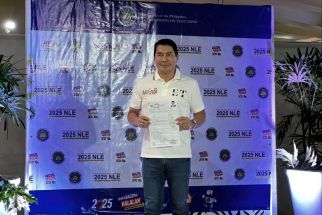1,500 additional traffic enforcers to be fielded
April 18, 2001 | 12:00am
Speed maniacs and reckless drivers, beware.
Upon orders of President Arroyo, at least 1,500 more traffic law enforcers will soon be fielded in a bid to ease the flow of vehicular traffic and make the streets of Metro Manila safer.
Major targets of the beefed up traffic force are reckless drivers and the so-called rolling coffins commonly blamed for vehicular accidents in the metropolis.
Interior and Local Government Secretary Jose Lina said the traffic officers will also be equipped with cellphones for easier coordination in the arrest of traffic law violators.
The move came as an offshoot of the President’s ocular inspection of mass transport systems and evaluation of the traffic conditions in Metro Manila during Holy Week, traditionally the peak season of passenger traffic.
Mrs. Arroyo noted that most traffic accidents were traced to reckless driving. "To minimize them (traffic accidents), we posted more policemen who will be catching all these reckless drivers," the President said during her weekly press briefing at Malacañang.
She also announced that the Land Transportation Office will be stricter in the registration of vehicles.
Senior Superintendent Vicente Raval, director of the Philippine National Police Traffic Enforcement Group (TEG), admitted that apart from being undermanned, his unit is ill-equipped to effectively perform its task of maintaining order in Metro Manila’s thoroughfares.
Raval pointed out that his 700 men could not cope with the requirements of over 400 intersections throughout the metropolis.
Raval also said despite his request for additional men, only a handful of new recruits were assigned to him.
It was discovered that most of the traffic equipment assigned to the TEG were still being handled by the Metropolitan Manila Development Authority’s (MMDA) Traffic Operations Center (MMDA-TOC).
Raval also complained that they were having difficulty obtaining their gasoline allocations because they had to go through the MMDA-TOC.
Another big problem being encountered by the TEG is the dearth of patrol cars, with their night shift having to make do with only five run-down vehicles.
A police official, who requested anonymity, claimed that the MMDA traffic enforcers were ill-trained in performing their tasks, saying most of them used to be mere street sweepers, and do not command the respect of motorists. –Marichu Villanueva, Marvin Sy
Upon orders of President Arroyo, at least 1,500 more traffic law enforcers will soon be fielded in a bid to ease the flow of vehicular traffic and make the streets of Metro Manila safer.
Major targets of the beefed up traffic force are reckless drivers and the so-called rolling coffins commonly blamed for vehicular accidents in the metropolis.
Interior and Local Government Secretary Jose Lina said the traffic officers will also be equipped with cellphones for easier coordination in the arrest of traffic law violators.
The move came as an offshoot of the President’s ocular inspection of mass transport systems and evaluation of the traffic conditions in Metro Manila during Holy Week, traditionally the peak season of passenger traffic.
Mrs. Arroyo noted that most traffic accidents were traced to reckless driving. "To minimize them (traffic accidents), we posted more policemen who will be catching all these reckless drivers," the President said during her weekly press briefing at Malacañang.
She also announced that the Land Transportation Office will be stricter in the registration of vehicles.
Senior Superintendent Vicente Raval, director of the Philippine National Police Traffic Enforcement Group (TEG), admitted that apart from being undermanned, his unit is ill-equipped to effectively perform its task of maintaining order in Metro Manila’s thoroughfares.
Raval pointed out that his 700 men could not cope with the requirements of over 400 intersections throughout the metropolis.
Raval also said despite his request for additional men, only a handful of new recruits were assigned to him.
It was discovered that most of the traffic equipment assigned to the TEG were still being handled by the Metropolitan Manila Development Authority’s (MMDA) Traffic Operations Center (MMDA-TOC).
Raval also complained that they were having difficulty obtaining their gasoline allocations because they had to go through the MMDA-TOC.
Another big problem being encountered by the TEG is the dearth of patrol cars, with their night shift having to make do with only five run-down vehicles.
A police official, who requested anonymity, claimed that the MMDA traffic enforcers were ill-trained in performing their tasks, saying most of them used to be mere street sweepers, and do not command the respect of motorists. –Marichu Villanueva, Marvin Sy
BrandSpace Articles
<
>
- Latest
- Trending
Trending
Latest
Trending
Latest
Recommended




























